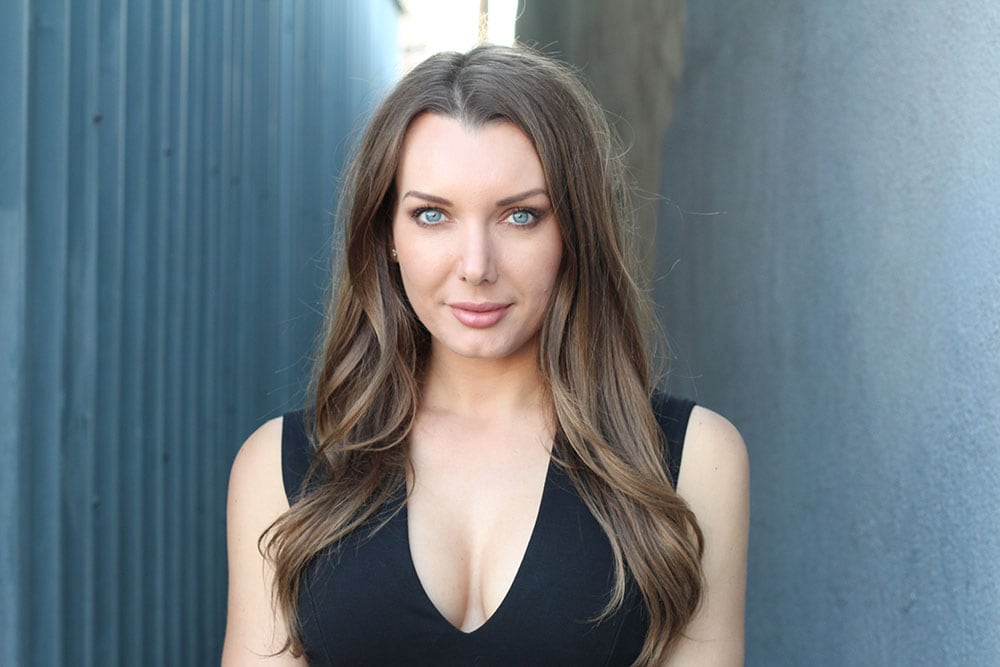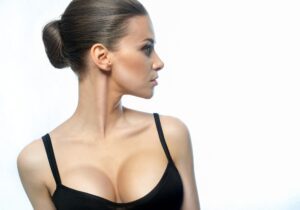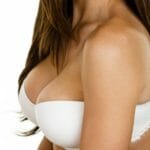Fat Transfer Breast Augmentation at a Glance
- Sedation: General anesthesia
- Procedure Length: Approximately two hours (depending on number of areas treated with liposuction)
- Potential Benefits: Fuller, more proportionate bustline; more noticeable cleavage; removal of unwanted fat in other areas; subtle and natural-looking results
- Potential Risks: Swelling, bruising, bleeding, mild discomfort; (less commonly) blood or fluid accumulations under the skin, infection, skin irregularities, asymmetrical results, adverse reactions to anesthesia
- Cost: From $10,000
Would you like bigger, fuller breasts and softer cleavage – without the placement of breast implants? If so, our Mountain View plastic surgeon may be able to use an innovative procedure to create your ideal bustline: autologous fat grafting for breast enhancement.
Fat grafting – which involves the removal of unwanted fat and re-insertion of the same fat into a desired area – can be perfect for women seeking a relatively modest increase in breast size, as well as a less invasive approach. While fat transfer breast augmentation is not a new technique, it has seen a resurgence in popularity in recent years as more women desire natural breast enlargement results.
Explore These Topics
- Fat Transfer Breast Augmentation Benefits
- Fat Transfer Breast Augmentation Candidates
- Complementary Procedures to Fat Transfer Breast Augmentation
- Fat Transfer Breast Augmentation Consultation
- Fat Transfer Breast Augmentation Preparation
- Fat Transfer Breast Augmentation Treatment
- Fat Transfer Breast Augmentation Recovery
- Fat Transfer Breast Augmentation Risks
- Non-Surgical Fat Transfer Breast Augmentation
- Fat Transfer Breast Augmentation Cost


Complementary Procedures to Fat Transfer Breast Augmentation
In many cases, Dr. Ereso is able to combine aesthetic surgeries for a comprehensive rejuvenation. Because liposuction is part of the natural breast augmentation procedure, patients are able to enjoy a more sculpted effect in an area of their choice in addition to their fuller breasts. Other treatments, such as cosmetic facial or body contouring procedures, can often be incorporated, as well. Dr. Ereso can discuss all of these potential solutions with you during your initial consultation.
What Does the Fat Transfer Breast Augmentation Consultation Entail?
Your consultation is an opportunity for you to personally meet with Dr. Ereso and discuss your concerns and treatment goals. Dr. Ereso can tell you more about fat transfer and determine whether it may be an appropriate solution for your needs.
Before attending this initial meeting, be prepared to answer questions about your medical history, medications, allergies, and any previous surgeries. This information will help Dr. Ereso plan a safe procedure. If you decide to move ahead with surgery, our team can discuss logistical details (such as scheduling, the ordering of additional medical tests or exams, payment and financing options, etc.) with you.
How Should I Prepare For Fat Transfer Breast Augmentation?
In anticipation of your fat transfer breast augmentation, we recommend that you plan to:
- Stop or switch any medications as advised by Dr. Ereso
- Maintain your weight with a healthy diet and exercise routine
- Refrain from smoking/using other nicotine products
- Limit your alcohol consumption
- Arrange for a companion to drive you to and from surgery/stay with you for the first night
- Secure childcare/pet-sitters
Dr. Ereso and our team will provide detailed pre-operative instructions, which we advise you to follow closely. If any questions arise about the treatment plan, never hesitate to reach out to us!
“This review has been a long time coming (almost one year soon). Dr Ereso and team are absolutely wonderful. Dr Ereso listened to exactly what I wanted and gave me a realistic view about the results that I could look forward to. After a whole year I can say to this day I am in love with the way I look and it makes me feel more confident than ever before. Dr Ereso and his team did an amazing job following up and making sure I was recovering well. I never felt once that I was being pushed towards a certain treatment or only given one option. I would recommend anyone who would like to enhance themselves in any way to come visit this great team.”
What Does the Fat Transfer Breast Augmentation Procedure Involve?
Fat transfer breast augmentation typically involves the use of general anesthesia. While it can also be performed locally, most patients opt for anesthesia, as the removal of fat can be painful. To begin the procedure, Dr. Ereso will use liposuction techniques to harvest donor fat from another area of the body (e.g., the abdomen or thighs). The fat will be purified and prepared for re-injection. Then, he will strategically inject small amounts of fat into the breasts to add volume and shape. This approach should encourage the fat to develop its own blood supply, which it needs in order to survive.
What Does Breast Augmentation Recovery Involve?
Dr. Ereso encourages you to take a week or two off from work after autologous breast augmentation to recover. Initially, you may experience bruising, swelling, bleeding, and mild discomfort in your breasts and the donor area, with the aftereffects gradually subsiding over time. Medication is usually prescribed to help resolve any pain.
During your recovery, you will be outfitted in a compression garment to help the treated tissues heal and minimize swelling. Wear this garment as often as possible, removing it only to shower and launder. Avoid any activity that could strain your healing breasts, including lifting heavy objects, jumping, bouncing, or performing chest exercises. In addition, putting pressure (i.e., sleeping or laying directly on) your chest should be avoided for at least five to six weeks to increase the “take,” or survival, of the injected fat.
You will meet with Dr. Ereso throughout your recovery so he can check your healing progress, answer your questions, and advise you as to when to resume your normal routine.
How Long Do Fat Transfer Breast Augmentation Results Last?
In order for the results of natural breast augmentation to last, the transplanted fat cells must develop a blood supply in their new position. Not all of the fat will survive after being grafted, so Dr. Ereso may inject more fat than is necessary to compensate. Additionally, to reach your desired breast volume, it may be necessary to have a second fat transfer procedure in the future.
Approximately three to six months after your fat transfer breast augmentation, your final results should reveal themselves. Dr. Ereso will follow up with you to evaluate your satisfaction with your results.
Is Fat Transfer Breast Augmentation Safe?
When natural breast augmentation is performed by a plastic surgeon trained in fat grafting techniques, complications are rare. That said, possible risks include infection, blood or fluid accumulations under the skin, skin irregularities, asymmetrical results, and adverse reactions to anesthesia. If you are concerned about any of these rare but possible complications, Dr. Ereso would be glad to discuss them in further detail during your consultation.
Are There Non-Surgical Alternatives to Fat Transfer Breast Augmentation?
As of today, there are no non-surgical treatments that involve the reduction and subsequent reinjection of fat into the breasts. Even though fat transfer breast augmentation was developed to produce less significant effects than a traditional augmentation, fat transfer still involves surgery, and a non-surgical alternative has yet to be discovered.
How Much Does Fat Transfer Breast Augmentation Cost?
Pricing for fat transfer breast augmentation at our practice generally ranges from $10,000 to $14,000. Please understand that several factors will contribute to the final price, including:
- The areas treated with liposuction
- Any extra procedures that might be included
- Anesthesia fees
- Dr. Ereso’s fee
- Charges related to the use of our medical facility
- Pre-and post-operative expenses (such as support garments and medications)
At Alexander Ereso Plastic Surgery and Aesthetics, we always aim to make the payment aspect of your experience stress-free and simple. We offer financing options through CareCredit® for eligible patients, and we encourage you to ask any financial questions that come to mind.
To discover the benefits of fat transfer breast augmentation for yourself, reach out to Alexander Ereso Plastic Surgery and Aesthetics today!






